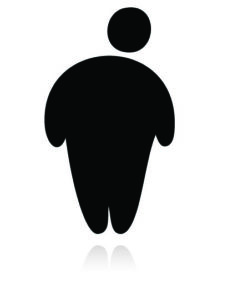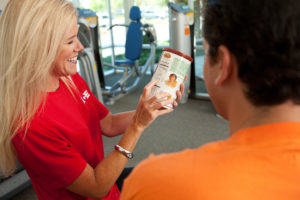Obesity
Do Fitness Pros Understand Clients With Obesity?
??In 1988, Joan Darragh tipped the scales at 288 pounds. During a trip to Japan, she had a defining moment. “I was in a bar, and I sat on a stool built for the slighter Asian frame,” says the New York City resident. “Suddenly, the bolts on my metal stool started to pop.” She tried to pretend it wasn’t her stool making that noise, but she still kept one foot on the floor.
Undoing Childhood Obesity
?It is well known that the United States faces a childhood obesity epidemic. In fact, 81% of respondents in a poll on the topic considered childhood obesity a serious concern and two-thirds believed the problem was getting worse (Hassink, Hill & Biddinger 2011). Actually, national surveys show a stabilization of childhood obesity rates and even small declines in some localities (RWJF 2012).
Building Networks of Nourishment
??Mindful movement specialist Lawrence Biscontini, MA, has won awards from ACE, IDEA, Inner IDEA®, Can-Fit-Pro and ECA World Fitness. He has created programming for international clubs and spas, including Equinox®, 24 Hour Fitness®, Gold’s Gym® International, Bally Total Fitness™, and Golden Door® Spas, where his work received a Condé Nast Traveler Award. He has been a consultant and trainer for leading spas in Europe, Asia and the United States and has served as a contributing author to IDEA Fitness Journal, AFAA’s American Fitness and AsiaSpa.
As Alcohol Intake Increases, Diet Quality Decreases
?While we are familiar with the blunting effect of
alcohol on gains in metabolism and accelerated
fat burning, researchers have found another
reason why we should cut back on adult beverages:
We tend to eat poorly on the days we imbibe.
The Biomechanics of Obesity
Anthony Carey, MA, CSCS, ACE-AHFP, owns Function First in San Diego, voted one of the city’s Best Personal Trainer/Studios in 2010 and 2011 and its Best Health & Fitness Club in 2012. Aside from being named 2009 PFP [Personal Fitness Professional] Trainer of the Year, he has written two best-selling books, The Pain-Free Program: A Proven Method to Relieve Back, Neck, Shoulder, and Joint Pain (Wiley 2005) and Relationships and Referrals: A Personal Trainer’s Guide to Doing Business with the Medical Community (CreateSpace 2012).
Gray Institute Launches Nonprofit
To help address some of the problems facing youth today—physical inactivity, diabetes and obesity, among them—the Gray Institute has launched the not-for-profit Free2Play.
Utilizing the institute’s Applied Functional Science™, Free2Play aims to improve “movement literacy” and athleticism through “progressive” lesson plans available via online learning with on-demand access. Free2Play doesn’t replace health and fitness programs or curriculum.
Overweight People Live— Longer?
If you were asked to visualize a model of longevity, would you picture someone overweight? Probably not. However, new research suggests that people who carry extra pounds could have a lower all-cause mortality risk than normal-weight people.
Mindfulness Meditation Program Combines Science With Practice
I’ve been teaching a program in mindfulness meditation for UCLA’s Mindful Awareness Research Center to about 25 people a quarter for the last year [at The Fitness Center at Toluca…
Meet People Where They Are
Melinda Manore is a professor in the department of nutrition and exercise sciences at Oregon State University. Her areas of expertise include integration of nutrition and physical activity for weight management, and prevention of chronic disease. Aside from authoring more than 100 scientific publications, book chapters and review articles, Manore has written four nutrition textbooks and two books for the Institute of Medicine’s Committee on Military Nutrition Research. Throughout her career, she has served on a number of nutrition and exercise editorial boards.
Overweight and Obese Women Should Scale Back Weight Gain During Pregnancy
The American College of Obstetricians and Gynecologists has come out with recommendations for weight gain during pregnancy based on the mother’s body mass index and on updated tables from the…
Conquering the “Obesogenic” Environment
Barbara Brehm-Curtis is a professor of exercise and sport studies at Smith College in Northampton, Massachusetts, where she teaches courses in stress management, nutrition and health. Aside from writing about health- and fitness-related topics for more than 25 years, she has worked as a fitness instructor, personal trainer, lifestyle coach and fitness program director. She has received the San Diego County Medical Society Media Award and was a Maggie Award finalist for regular columns in Fitness Management, where she served as a contributing editor.
Obese Children More Vulnerable to Food Advertising
When viewing food logos, obese children show less activity in regions of the brain associated with self-control than do their healthy-weight counterparts, reports The Journal of Pediatrics.
Researchers from the University of Missouri, Kansas City, and the University of Kansas Medical Center tested youth aged 10–14, using both self-reported measures of self-control and functional magnetic resonance imaging, which tracks blood flow as a measure of brain activity.
2012 Shape of the Nation Report
With health threats from overweight and obesity still looming, physical activity in schools continues to be a hot button. How do U.S. children rank when it comes to physical education and exercise? Here are some highlights from the 2012 Shape of the Nation Report: Status of Physical Education in the USA:
14% of students did not participate in at least 60minutes of physical activity on any day during the 7 days before the survey.
71% of students were physically active at least 60 minutes per day on fewer than 7 days during the 7 days before the survey.
Overweight, Obesity, Triples in Armed Forces
Serving in the U.S. Armed Forces is physically demanding, and military leaders have developed measures to ensure recruits are “mission-ready.” Unfortunately, a significant number of both first-time applicants and active military personnel do not meet this standard.
Physicians Unqualified to Treat Obesity
Perhaps it’s time fitness professionals schooled physicians on how to solve the obesity problem. According to researchers from Johns Hopkins University, a significant percentage of polled primary-care physicians don’t feel qualified and educated enough to treat obesity.
The study, published in BMJ Open (2012; 2: e001871), included Internet survey data from 500 PCPs throughout the United States.
“We evaluated physician perspectives on the following topics:
Fewer, Larger Meals May Be Healthier Option for Obese Women
It may sound counterintuitive, yet new research from the University of Missouri, Columbia, suggests that eating fewer, larger meals may prove healthier for obese women than eating smaller meals more often. More specifically, consuming three substantial meals per day instead of six small meals may decrease obese women’s risk of developing heart disease.
Conquering the “Obesogenic” Environment
Barbara Brehm-Curtis is a professor of exercise and sport studies at Smith College in Northampton, Massachusetts, where she teaches courses in stress management, nutrition and health. Aside from writing about…
The Biggest Loser Watchers Avoid Exercise
The Biggest Loser may hope to offer up big inspiration for its millions of viewers. But that inspiration doesn’t extend beyond the couch. A recent study suggests that the reality television program actually turns viewers off to exercise.
Kids’ Sleep, Obesity and Electronic Devices
The rates of overweight and obesity among kids continue to climb. Food choices and inactivity are considered major culprits. Are electronic devices also to blame?
Scientists from the School of Public Health at the University of Alberta have linked use of electronic devices, poor sleep patterns and obesity among Canadian 5th graders. The researchers surveyed sleep habits, food intake, physical activity levels, height and weight measurements, and nighttime use of electronic devices among 3,398 children.
Prevention Is the Best Policy for Kids’ Obesity
Avery Faigenbaum, EdD, is a professor in the department of health and exercise science at The College of New Jersey. With a specialty in pediatric exercise science, he has authored…


















